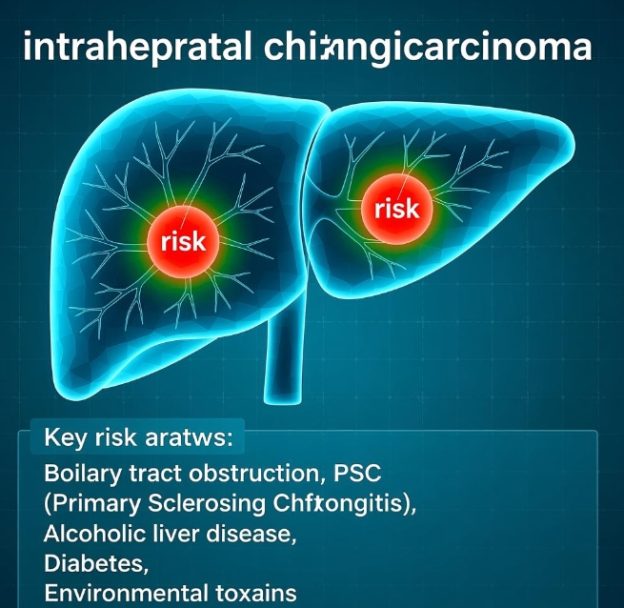Intrahepatic cholangiocarcinoma (ICC) arises from bile ducts within the liver parenchyma. Early lesions are usually asymptomatic; as the tumor enlarges or metastasizes, the following complaints typically appear:
- Right-upper-quadrant pain
A dull, continuous ache or vague fullness beneath the ribs is the most frequent early symptom; it may radiate to the back or shoulder. - Palpable mass or hepatomegaly
Patients or clinicians can feel a firm, nodular liver edge or localized lump that moves with respiration. - Unintended weight loss & anorexia
Rapid loss of >5 % body weight within weeks, early satiety and loss of interest in food are common systemic effects. - Fatigue and night sweats
Persistent tiredness, low-grade fever and drenching night sweats reflect cytokine release and tumor cachexia. - Jaundice (less common than in hilar tumors)
Yellow sclera/skin, dark urine and pale stools occur only when large tumors compress intra-hepatic bile radicals or invade the hepatic hilum. - Pruritus
Deposition of bile salts can produce intense, often intractable itching even before visible jaundice. - Paraneoplastic signs
Hypercalcaemia, hypoglycaemia or dermatomyositis occasionally precede other manifestations.
Because findings overlap with benign liver disease, any new combination of RUQ pain, weight loss and fatigue—especially in patients with cirrhosis, hepatitis or primary sclerosing cholangitis—should prompt urgent imaging and tumour-marker assessment.
| Symptom / Sign | Typical Features |
|---|---|
| RUQ pain/heaviness | Dull ache, may radiate to shoulder |
| Palpable mass | Firm, nodular, moves with breathing |
| Weight loss | >5 % in weeks, anorexia |
| Fatigue/night sweats | Persistent, low-grade fever |
| Jaundice | Late, if bile radicals compressed |
| Pruritus | Intense, may precede icterus |
| Paraneoplastic | Hypercalcaemia, skin rash |
